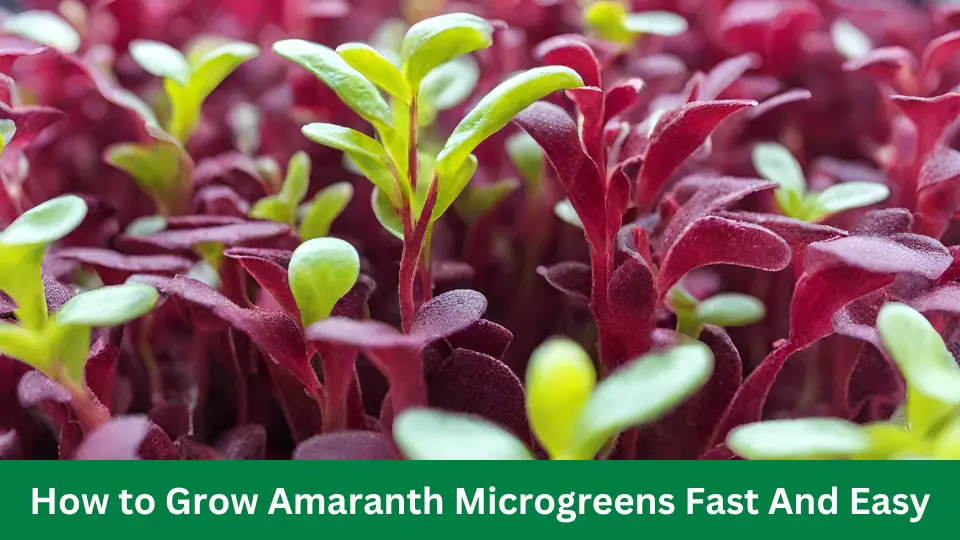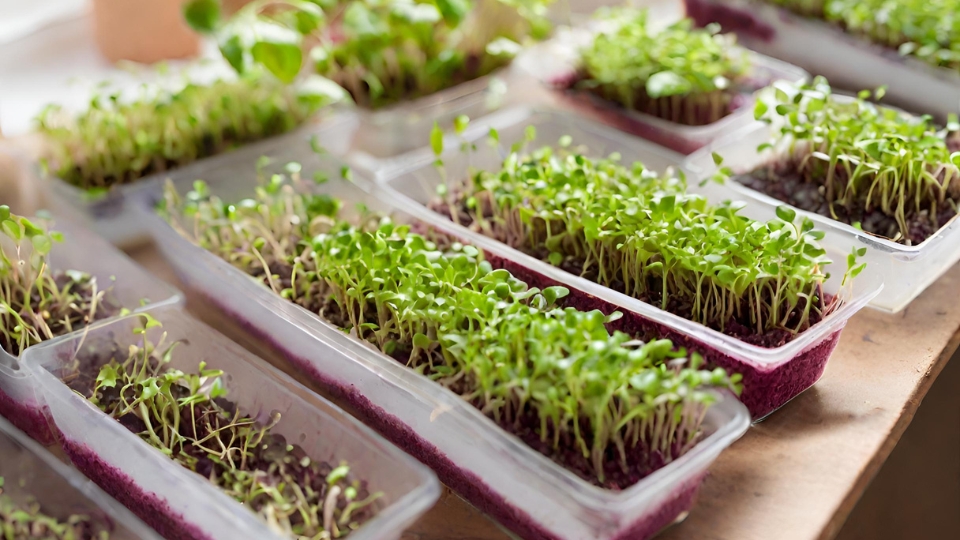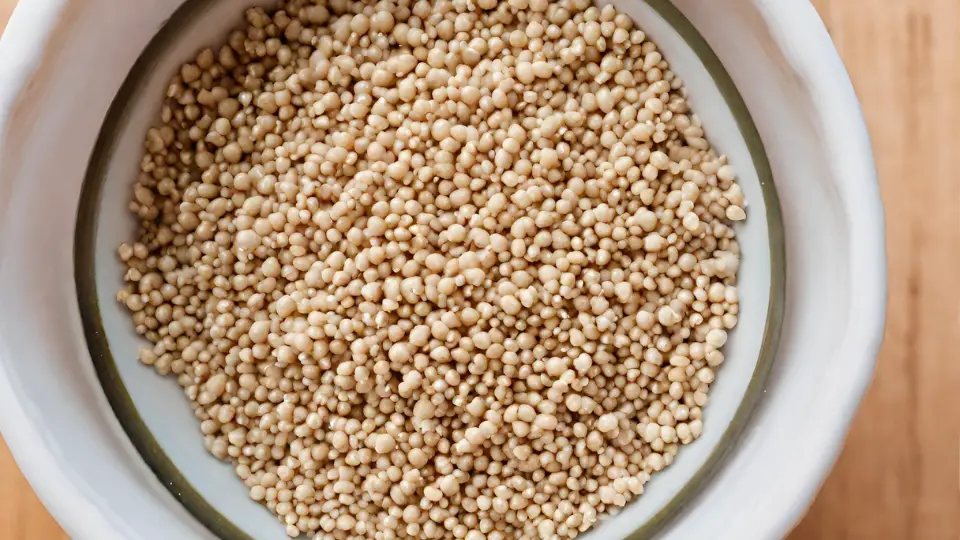
How to Grow Amaranth Microgreens Fast And Easy
To grow amaranth microgreens quickly and easily, follow these steps. Growing amaranth microgreens is a simple and efficient process that takes minimal effort and yields fast results.
You can ensure healthy and speedy amaranth microgreen growth by following proper planting, watering, and lighting techniques. This guide will provide the necessary information to cultivate amaranth microgreens quickly. So, let’s dive in and discover how to grow amaranth microgreens quickly!
Benefits Of Growing Amaranth Microgreens
When it comes to adding nutritional punch to your meals, it doesn’t get better than amaranth microgreens. These tiny greens are easy to grow and offer a wide range of benefits that will excite you to include them in your diet. This article will explore the nutritional value, quick and easy growth, and versatile usage of amaranth microgreens. We’ll give you all the reasons to start growing them today.

Nutritional value
Amaranth microgreens pack a powerful nutritional punch, making them an excellent addition to any healthy diet. These greens are rich in vitamins like C and K, essential for keeping your immune system strong and blood clotting correctly. Furthermore, amaranth microgreens contain crucial minerals such as iron and potassium, which are vital for maintaining healthy bodily functions. Adding amaranth microgreens to your meals is a simple way to boost nutrient intake and support overall well-being.
Quick and easy growth
Growing amaranth microgreens is easy, even for beginners. These greens can be grown in small containers indoors, making them an excellent choice for those with limited space. With the right conditions, you can expect your amaranth microgreens to germinate and reach the harvesting stage in one to two weeks. This fast growth rate means you can enjoy the fruits of your labor in no time, adding vibrant green goodness to your dishes without hassle.
Versatile Usage in Various Dishes
Amaranth microgreens offer delightful flavor and texture, making them a versatile ingredient in various dishes. Whether you want to add a nutritious twist to your salads, sandwiches, soups, or even smoothies, amaranth microgreens provide a vibrant and peppery taste. This complements a wide range of flavors. These greens also make a colorful and nutritious garnish for your favorite dishes, adding aesthetic appeal to impress your guests. With amaranth microgreens, the endless possibilities ensure you never run out of creative ways to incorporate them into your culinary creations.
If you’re ready to boost your nutrient intake, enjoy the quick and easy-to-grow nature of amaranth microgreens, and savor their versatile usage in various dishes, it’s time to try. Start growing amaranth microgreens today and experience firsthand the many benefits they bring to your plate.
Step-by-step Guide To Growing Amaranth Microgreens
Growing amaranth microgreens is rewarding and satisfying. These vibrant and nutritious greens add color to your dishes and contain various health benefits. In this step-by-step guide, we will walk you through growing amaranth microgreens from start to finish, ensuring fast and effortless success.
Choosing The Right Amaranth Seeds

The first step in growing amaranth microgreens is choosing the right seeds. Opt for organic and non-GMO seeds to ensure your microgreens are free from harmful chemicals. Amaranth varieties such as red garnet and green leaf are popular for microgreen cultivation due to their intense flavor and striking colors.
Preparing For The Growing Medium
The next step is to prepare the growing medium, the foundation for microgreen growth. Amaranth microgreens thrive in a well-drained and nutrient-rich medium. You can create your growing medium by combining equal parts of high-quality potting soil and vermiculite or coconut coir. Alternatively, you can purchase pre-made soil mixes for microgreen cultivation.
Sowing The Seeds And Providing Optimal Conditions
Once your seeds and growing medium are ready, it’s time to sow the amaranth seeds. Spread a thin layer of seeds evenly across the growing medium’s surface, ensuring they are not overcrowded. Gently press the seeds into the soil to ensure proper contact. Cover the base with a thin layer of soil or vermiculite.
To ensure optimal conditions for germination and growth, cover the tray with a clear lid or plastic wrap to create a mini greenhouse effect. Place the tray in a warm and bright location, such as near a window in indirect sunlight. The ideal germination temperature is around 70°F (21°C).
Caring For The Microgreens During The Growth Period
During the growth period, it’s essential to provide proper care for the amaranth microgreens to ensure healthy and vigorous growth. Here are some essential tips to remember:
- Watering: Water the microgreens regularly to keep the soil moist but not waterlogged. Use a spray bottle or gentle watering can to avoid disturbing delicate sprouts.
- Lighting: Remove the cover once the seeds have germinated, and place the tray in a well-lit area with indirect sunlight. Amaranth microgreens require around 12 hours of light per day.
- Air Circulation: Promote air circulation by gently blowing a fan over the microgreens for a few minutes daily. This strengthens their stems and prevents mold or fungal growth.
- Harvesting: Harvest the amaranth microgreens when they reach 1-2 inches. Use sharp scissors to cut the greens just above the soil level.
Following these steps and providing proper care, you can enjoy a bountiful harvest of amaranth microgreens in just a few days. Experiment with different recipes and incorporate these flavorful greens into your meals for a nutritious and delightful culinary experience!
Harvesting And Using Amaranth Microgreens
Harvesting amaranth microgreens at the right time and using them effectively can significantly enhance your culinary experience. These petite and vibrant greens provide a flavor and nutritional boost. This section will explore the crucial aspects of harvesting, the proper cutting techniques, and exciting culinary uses and recipes for these delightful greens.

Timing The Harvest
Timing is crucial when harvesting amaranth microgreens. You want to ensure that the greens have reached their maximum growth potential without becoming overly mature. This is typically achieved when the microgreens have developed their first set of true leaves, which usually takes 10 to 14 days. Amaranth microgreens will be approximately 2 to 4 inches tall at this stage.
To determine the optimal time for harvest, look for the following indicators:
- The stem of the microgreens should be firm and sturdy.
- The leaves should be fully developed with vibrant colors.
- Avoid harvesting them too late, as the greens may become rigid and lose their tender texture.
Proper Cutting Techniques
When harvesting amaranth microgreens, proper cutting techniques are essential to preserve their quality and ensure regrowth for subsequent harvests. Follow these steps for effective harvesting:
- Snip the microgreens just above the soil level using a pair of sharp scissors or a clean knife.
- Collect the harvested microgreens in a clean container or on a cutting board to prevent any soil or debris contamination.
- To encourage regrowth, avoid damaging the roots and bottom portion of the stems during harvest.
Culinary Uses And Recipes
Amaranth microgreens offer a wide range of culinary possibilities, adding flavor and visual appeal to your dishes. Here are some delightful ways to incorporate these greens into your meals:
- Salads: Sprinkle a handful of fresh amaranth microgreens on top of your salads to add a vibrant touch, a pop of flavor, and an extra boost of nutrients.
- Sandwiches and Wraps: Layer these microgreens onto your favorite sandwiches or wraps for an added crunch and a unique taste.
- Smoothies: Blend a handful of amaranth microgreens into your smoothies for a nutritional boost. They pair well with fruits like bananas, mangoes, or berries.
- Stir-Fries: Toss amaranth microgreens into your stir-fried vegetables for a quick and healthy addition, adding a mild and earthy flavor.
With their versatility and exceptional nutritional profile, amaranth microgreens are a fantastic addition to any dish. Let your creativity soar as you experiment with these tender greens in various recipes and explore new flavors.
Faqs About Growing Amaranth Microgreens
If you’re interested in growing amaranth microgreens, you probably have some questions about the process. This section will answer some of the most common FAQs about amaranth microgreens. We’ll cover the ideal lighting conditions and how long they take to produce. Let’s dive in!
Can Amaranth Microgreens Be Grown Indoors?
Yes, amaranth microgreens can be quickly grown indoors, making them suitable for anyone who wants to try gardening but doesn’t have much outdoor space. You can grow these nutritious and vibrant microgreens in your home using a simple setup with trays or containers.
What Lighting Conditions Are Ideal for Amaranth Microgreens?
Amaranth microgreens thrive in bright, indirect light. While they can tolerate some shade, providing them with ample light will ensure their optimal growth. Consider placing them near a south- or west-facing window or using artificial grow lights if natural light is limited. In either case, monitor the light exposure and adjust accordingly to prevent excessive heat or a lack of light.
Can I Reuse Soil After Harvesting?
Reusing the soil after harvesting amaranth microgreens is not recommended. These delicate plants deplete the nutrients in the ground as they grow, so it’s wise to start with fresh soil for each new batch. Additionally, reusing soil can increase pest and disease risk. To ensure the health and success of your amaranth microgreens, opt for fresh soil or a fresh growing medium for each planting.
How Long Do Amaranth Microgreens Take To Grow?
Amaranth microgreens proliferate. Under ideal conditions, they can be ready to harvest in 7 to 14 days after sowing the seeds. Temperature, light, and moisture can influence growth rates. Regularly monitor your microgreens and harvest them when they reach the desired size and have developed their first true leaves.
Are There Any Common Pests Or Diseases To Watch Out For?
While amaranth microgreens are generally pest-resistant, there are some common pests and diseases to watch out for. Aphids, fungus gnats, and damping-off diseases can threaten your microgreens. To prevent or manage these issues, practice effective hygiene, maintain proper watering techniques, and consider organic pest control methods if necessary.
How Long Does It Take To Grow Amaranth Microgreens?
Amaranth microgreens typically take 7 to 14 days to grow from seeds to harvest, depending on growing conditions and the desired maturity level. Harvesting occurs when microgreens reach 1-2 inches, usually within two weeks.
What Are The Benefits Of Growing Amaranth Microgreens?
Growing amaranth microgreens has health benefits. They contain essential nutrients like vitamin C, iron, and calcium. These microgreens also contain high levels of antioxidants, which boost the immune system and protect against chronic diseases.
How Do You Grow Amaranth Microgreens?
Soak the seeds in water for a few hours to grow amaranth microgreens. Spread them evenly on a tray filled with a thin layer of moist soil. Keep the seeds in a warm and well-lit area, watering daily.
Fresh and tasty amaranth microgreens are ready for harvest within a week or two.
Conclusion
Growing amaranth microgreens can be quick and effortless with these easy-to-follow tips. You can ensure fast and successful growth by providing proper care, such as maintaining moisture, providing sufficient light, and being mindful of temperature and humidity.
Remember to harvest at the right time for optimal flavor and nutrition. You can quickly enjoy delicious and nutritious amaranth microgreens with patience and attention. Happy growing!
Video Source: https://www.youtube.com/watch?v=73VuKsYYexw


